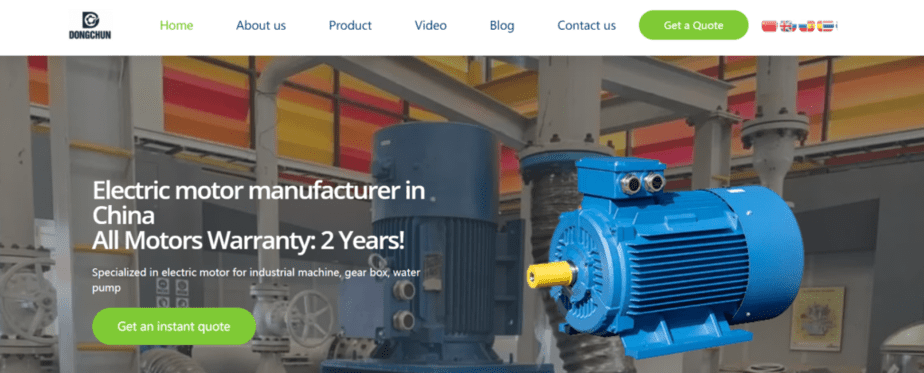Motor Vibration and Noise: End Cap Axial Vibration and Brush Device Vibration

In our previous discussions, we focused on the rotor factors that contribute to motor vibration.
Today, we will discuss two additional factors: end cap axial vibration and brush device vibration.
In the manufacturing process, vibration and noise are closely linked, with mechanical noise arising as a result of vibration.
Therefore, managing mechanical noise should begin with the elimination of mechanical vibration.

End cap axial vibration and noise
Bearing vibration is the primary cause of end cap axial vibration, which is a source of mechanical noise.
This is especially relevant for small motors, where smaller axial dynamic stiffness in the end cap can result in greater vibration speed and noise.

Brush device vibration and noise
Brush device vibration and noise is caused by several factors, including the condition of the commutator surface, a large gap between the brush and brush grip, inadequate brush pressure leading to skewed brushes, and insufficient stiffness in the brush grip, brush frame, and brush rod.
The sliding contact condition between the brush and commutator surface during DC motor operation creates a cuprous oxide film covered by a graphite film and dust particles.
This film affects not only the motor's commutation performance, but also its vibration and noise.
In practice, the film does not form as easily on the sliding contact surface during no-load operation, leading to dry friction between the brush and commutator and an increase in noise.
In fact, in rolling steel DC motors, no-load operation accounts for over 50% of the total time, with no-load conditions resulting in 6-10dB more noise than load conditions.
The vibration and commutator surface vibration caused by mechanical reasons are different, and the latter can be checked at low motor speeds (by touching the brush to feel for vibration).
The spectrum of brush vibration noise generated by sliding contact typically ranges from 1000 to -8000Hz and does not change significantly with changes in motor speed, making it distinguishable from mechanical causes.

Brush vibration noise generated by sliding contact is also affected by brush polarity.
For instance, positive brushes of DC generators vibrate less than negative brushes due to the ability of positive brushes to separate crystals of graphite and carbon that absorb water on the commutator surface and form a lubricating film, while negative brushes eradicate it.
The choice of brush grade is initially based on commutation performance, but the vibration and noise of the brush must also be considered.

In addition to mechanical noise, aerodynamic noise is also a significant problem in motor noise control, especially for high-speed motors. We will cover this topic in more detail in future discussions.
By continuing to learn about this topic, you can enhance your knowledge and remain competitive in today's ever-evolving technological landscape.
Professional electric motor manufacturers in China

China is a major player in the global electric motor industry, with numerous manufacturers producing high-quality and cost-effective motors for various applications
Dongchun motor offers a wide range of electric motors that are designed and built to meet international standards and comply with the specific requirements of their clients.
The company has an extensive product portfolio that includes single-phase and three-phase AC motors, brake motors, gear motors, and special motors for customized applications.







